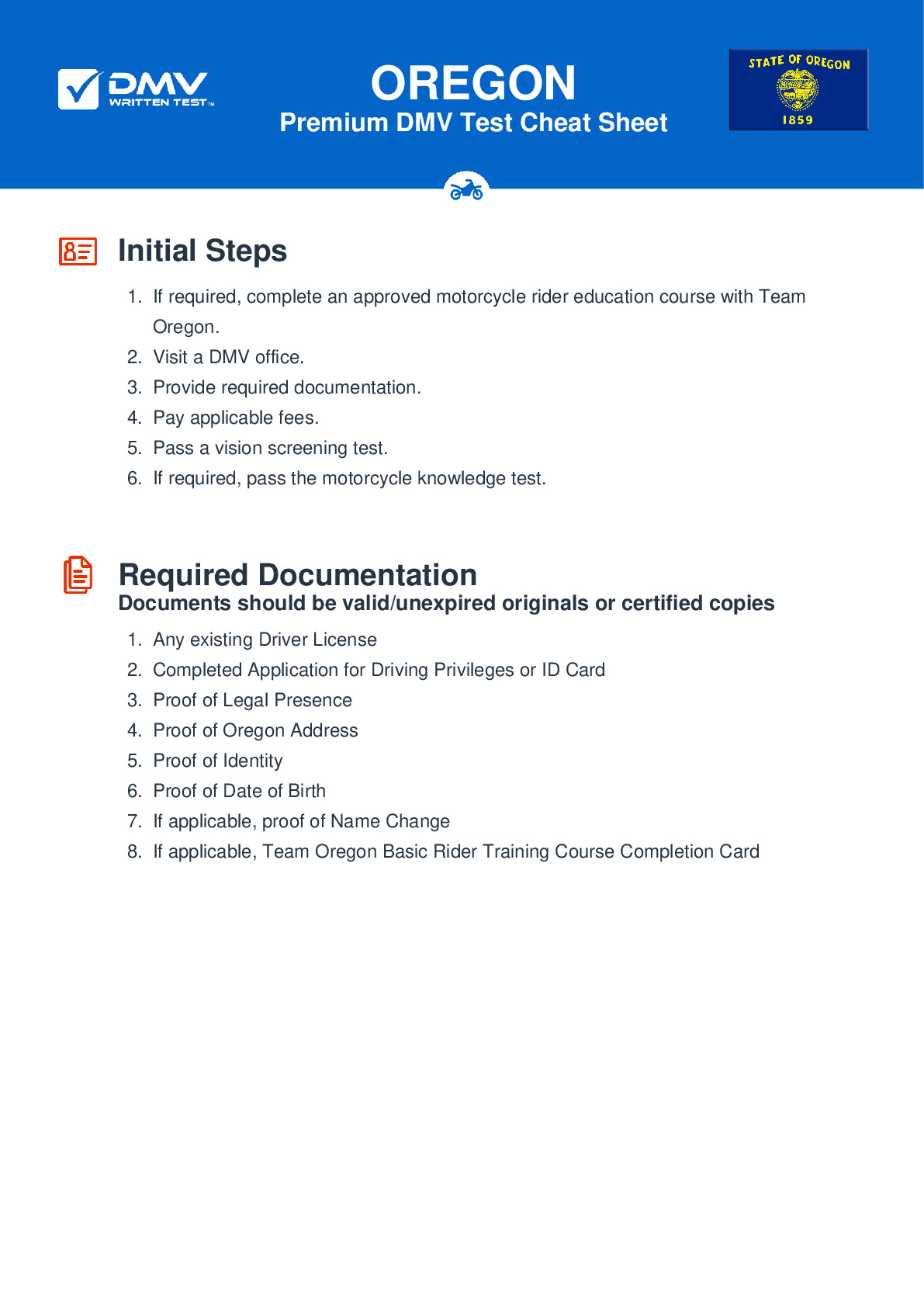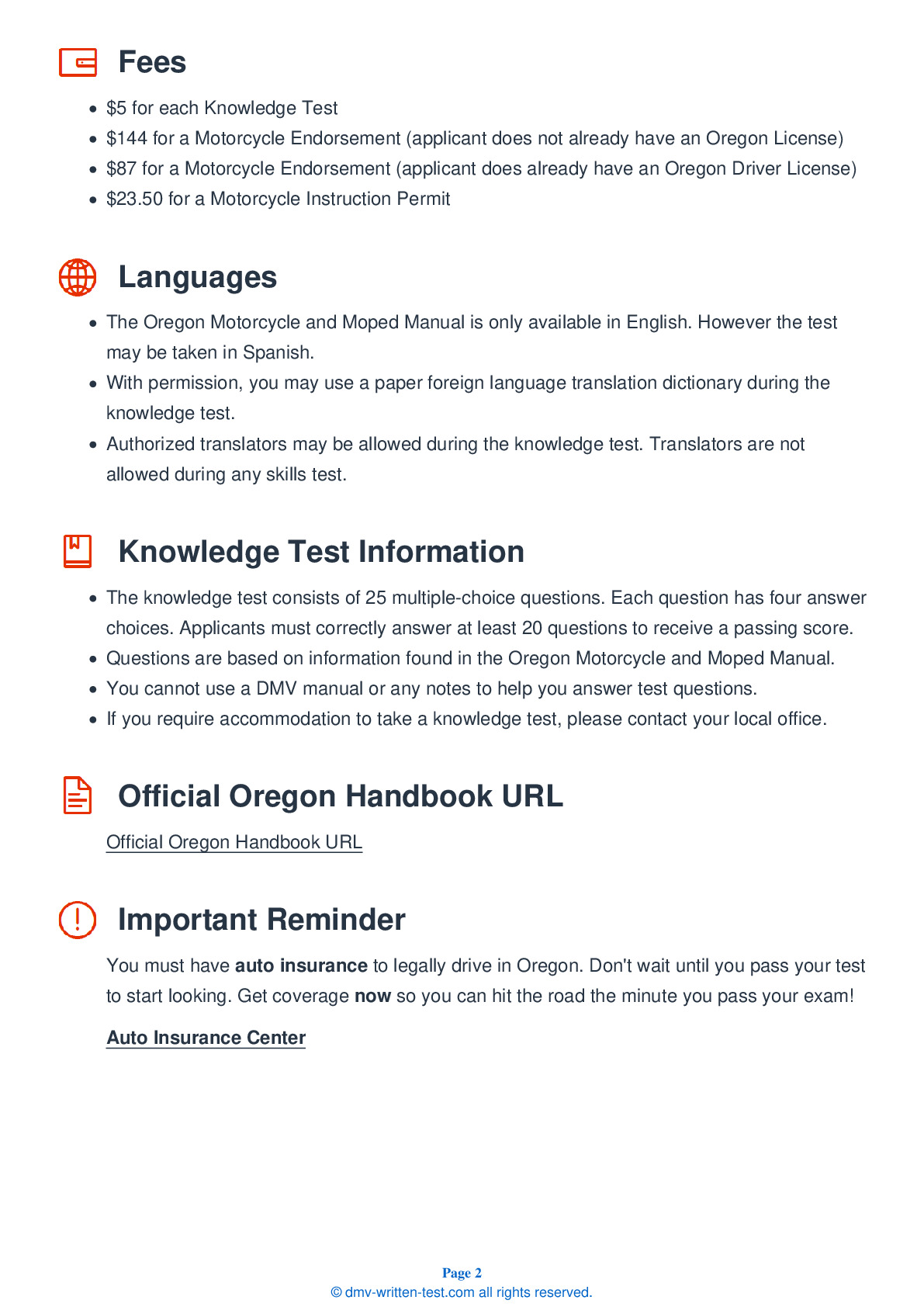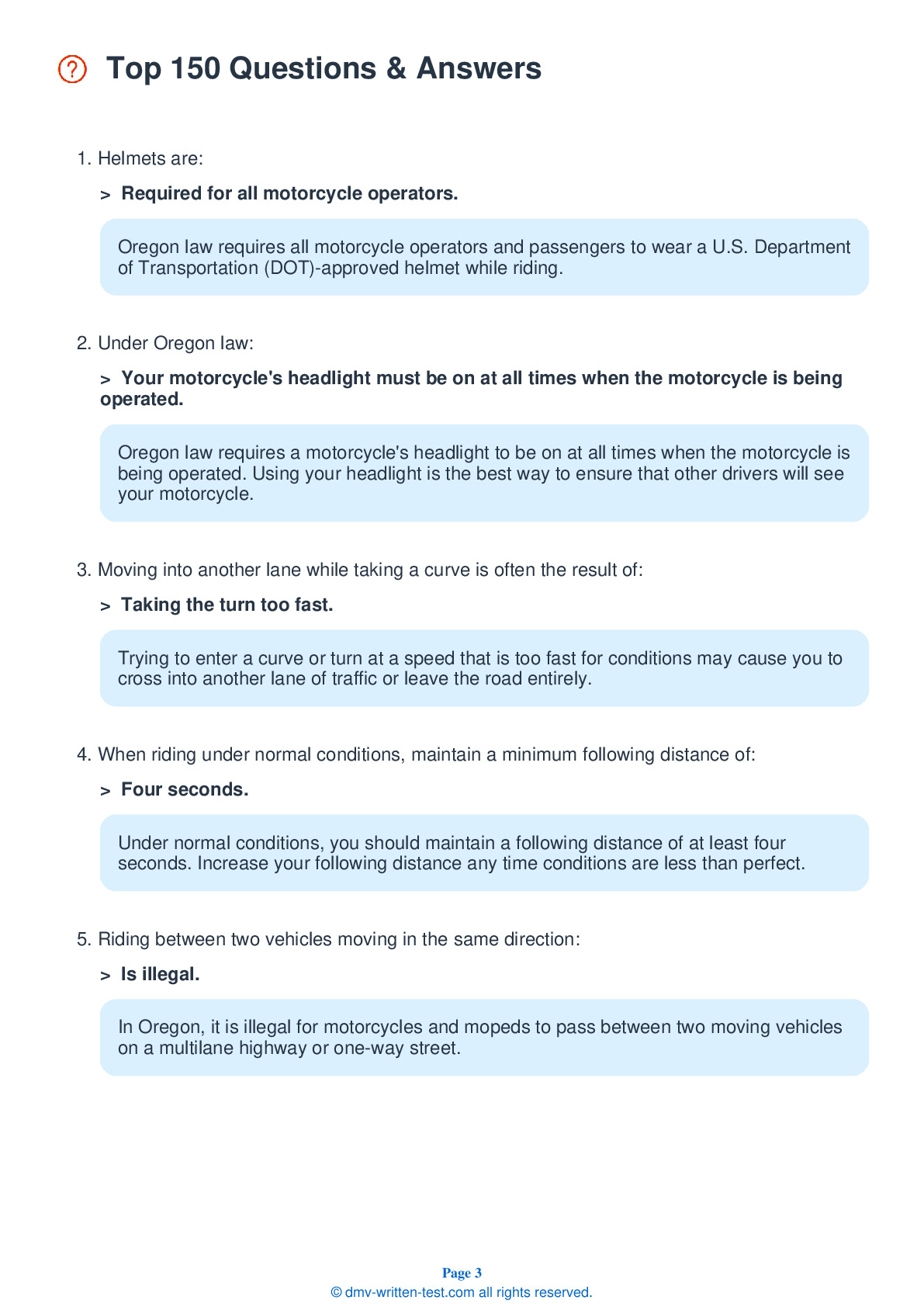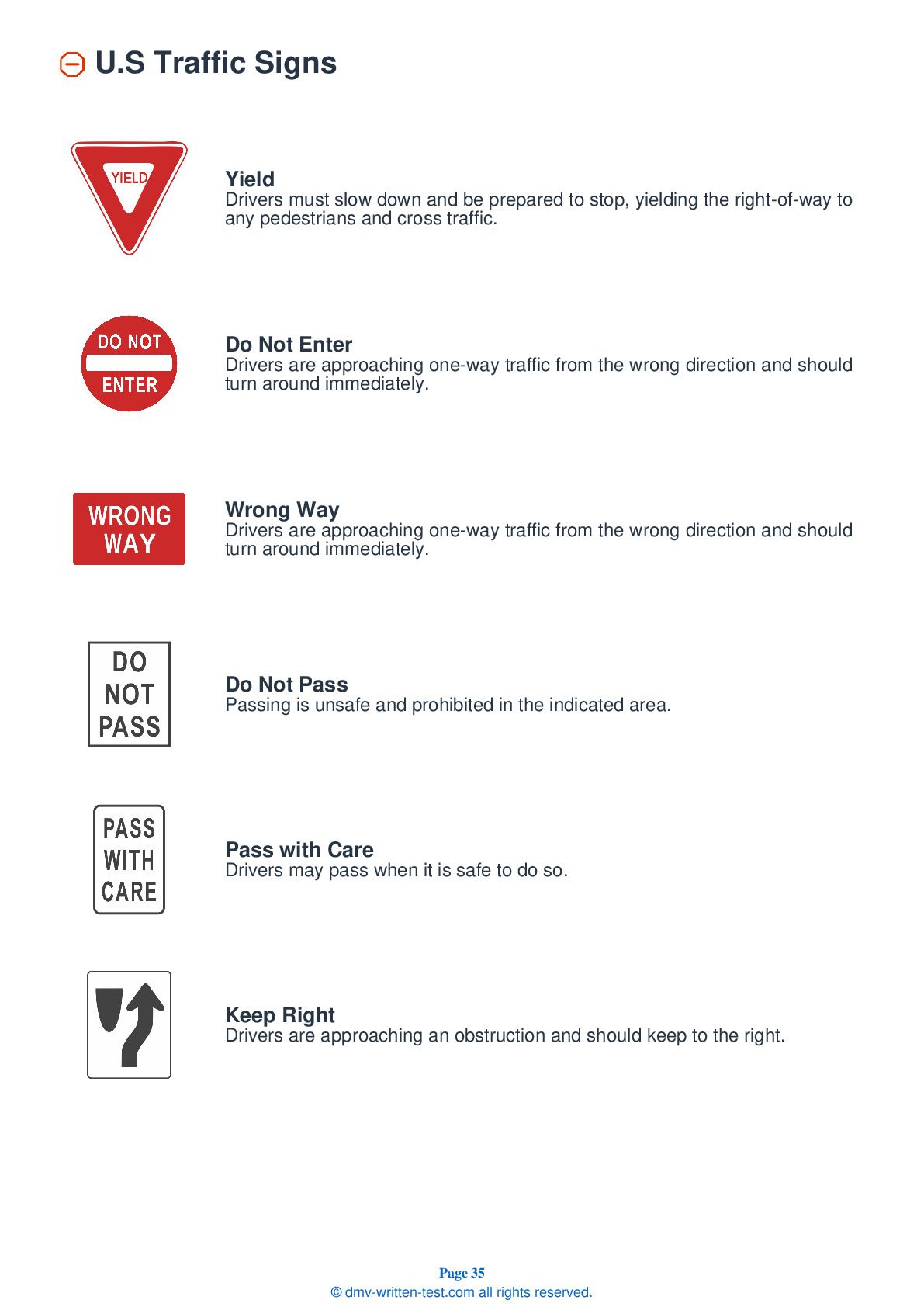2025 Oregon Motorcycle Permit Test 11
The following questions are from real DMV written motorcycle permit tests. These are some of the actual permit questions you will face in Oregon when getting your motorcycle learners permit. Each motorcycle theory practice test question has three answer choices. Select one answer for each question and select "grade this section." You can find this button at the bottom of the drivers license quiz. For a complete list of questions and answers for Oregon please visit https://cheat-sheets.dmv-written-test.com/en/oregon/motorcycle.
Number of Tests
Number of Question
Passing Score
19. Passengers should:
Explanation
Passengers should sit directly behind the operator and lean as the operator leans. They should sit as far forward as they can without crowding the operator, holding onto the operator's waist, hips, or belt.
20. To best control a motorcycle, a rider should:
Explanation
When riding, sit so that you can use your arms to control the motorcycle rather than to hold yourself up. Your arms should be slightly bent when you hold the handgrips. To help maintain your balance, keep your knees against the gas tank and your feet firmly on the footrests.
21. To be effective, eye or face shield protection must be all of the following, except:
Explanation
To be effective, an eye or face shield must be free of scratches; be resistant to penetration; allow clear views to both sides; fasten securely; permit air to pass through to prevent fogging; and allow room for eyeglasses or sunglasses, if needed.
22. How can a motorcycle operator discourage lane sharing by other drivers?
Explanation
By riding in the center portion of your lane, you will ensure that there is not a large space on either side of your motorcycle. Minimizing those spaces can help deter drivers from trying to share the lane with you.
23. Increase your following distance if:
Explanation
Open up your following distance if your motorcycle will require a longer distance than normal to stop. Additionally, if you are riding in heavy traffic or if you cannot see through the vehicle in front of you, you should also increase your following distance.
24. When approaching a blind intersection with a stop sign, riders should:
Explanation
When approaching a blind intersection that is controlled by a stop line or stop sign, you must first stop where indicated. You may then edge forward and stop again just short of where the cross traffic lane meets your lane. From that position, lean your body forward and look around buildings, parked cars, or bushes to see if anything is approaching. Make sure your front wheel stays out of the crossroad while you are looking.
25. Most motorcycle crashes happen:
Explanation




